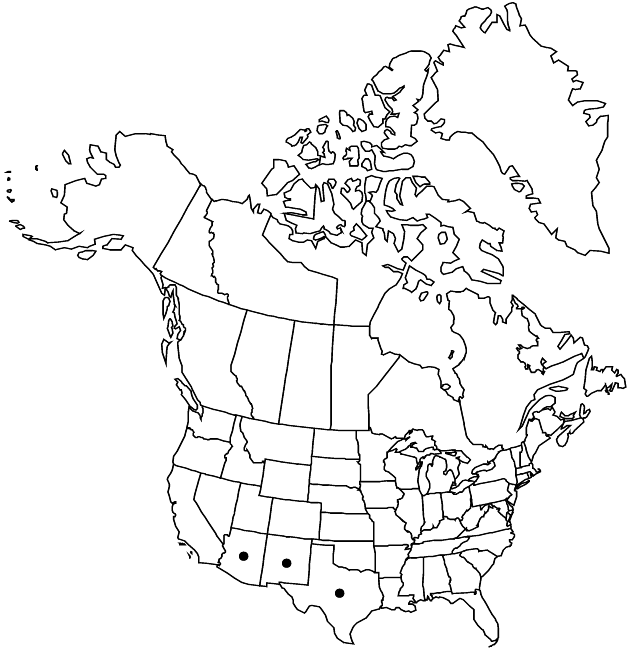Hieracium carneum
Bot. Gaz. 6: 184. 1881.
Plants 30–60 cm (herbage sometimes glaucous). Stems proximally glabrous or piloso-hirsute (hairs 6–10+ mm), distally glabrous. Leaves: basal (0–) 3–5, cauline 4–8+; blades oblanceolate to lanceolate or linear, 40–80 (–120) × 5–10 (–20) mm, lengths 2.5–8+ times widths, bases cuneate to truncate, margins entire, apices rounded to acute, faces glabrous or piloso-hirsute (hairs 3–6+ mm). Heads 6–25+ in ± corymbiform to paniculiform arrays. Peduncles usually glabrous, sometimes stellate-pubescent and/or stipitate-glandular. Calyculi: bractlets 8–13. Involucres campanulate, 7–10 mm. Phyllaries 13–16+, apices ± rounded, abaxial faces usually glabrous, sometimes stellate-pubescent and/or stipitate-glandular. Florets ca. 20; corollas whitish to pinkish, ca. 8 mm. Cypselae weakly urceolate, 3–4.5 mm; pappi of 50–60+, white or stramineous bristles in 2+ series, 4–5+ mm.
Phenology: Flowering Jul.
Habitat: Rocky sites
Elevation: 2000–2300 m
Distribution

Ariz., N.Mex., Tex., Mexico (Chihuahua)
Discussion
Selected References
None.
Lower Taxa
"fine" is not a number.